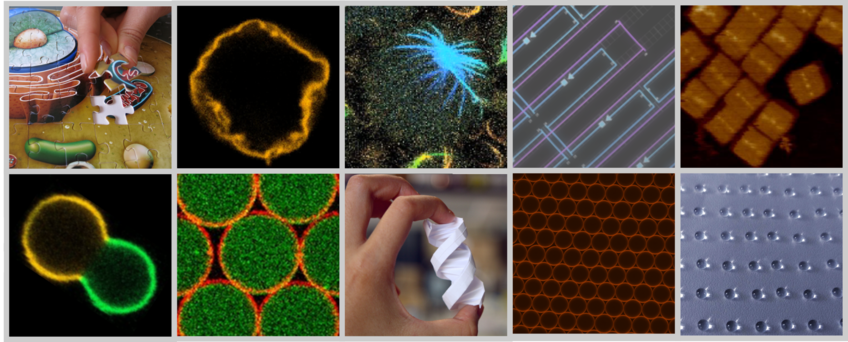
Biophysical Engineering of Life
Kerstin Göpfrich (Max Planck Research Group Leader and Full Professor at the Center for Molecular Biology (ZMBH), Heidelberg University)
What is life and could it be different? Is it possible to build a living cell from scratch? While questions like these have fascinated mankind for centuries, it is exciting that science begins to develop tools to approach them. Bottom-up synthetic biology conventionally isolates and subsequently recombines biomolecules from cells. Instead of copying life as we know it, our ambition is to assemble a synthetic model cell that consists of a lipid vesicle and operates based on custom-engineered molecular hardware. Thereby, it will be possible to probe boundary conditions of life and, from a practical point of view, to build biomedical interfaces between natural and synthetic cells.
Towards this goal, we are combining biophysical tools, including DNA and RNA origami, microfluidics, lipid vesicles, directed evolution and 3D laser printing with experimental methods, like confocal microscopy, atomic force microscopy, cryo electron microscopy and computational approaches.
Currently, we work on the following projects (for the latest details see www.goepfrichgroup.de):
- Genetic encoding of functional RNA origami in synthetic cells (funded by ERC starting grant ENSYNC)
- 3D laser printing in and on synthetic cells (integrated into the excellence cluster 3D Matter Made to Order)
- DNA nanotechnology and DNA origami for synthetic cells
- Image-based selection
- Information encoding and processing
- Synthetic immunology (in collaboration with groups at CIID and DKFZ)
Sounds interesting? We always welcome applications from motivated, talented and friendly new group members at all levels with a background in physics, chemistry, bioengineering or similar.